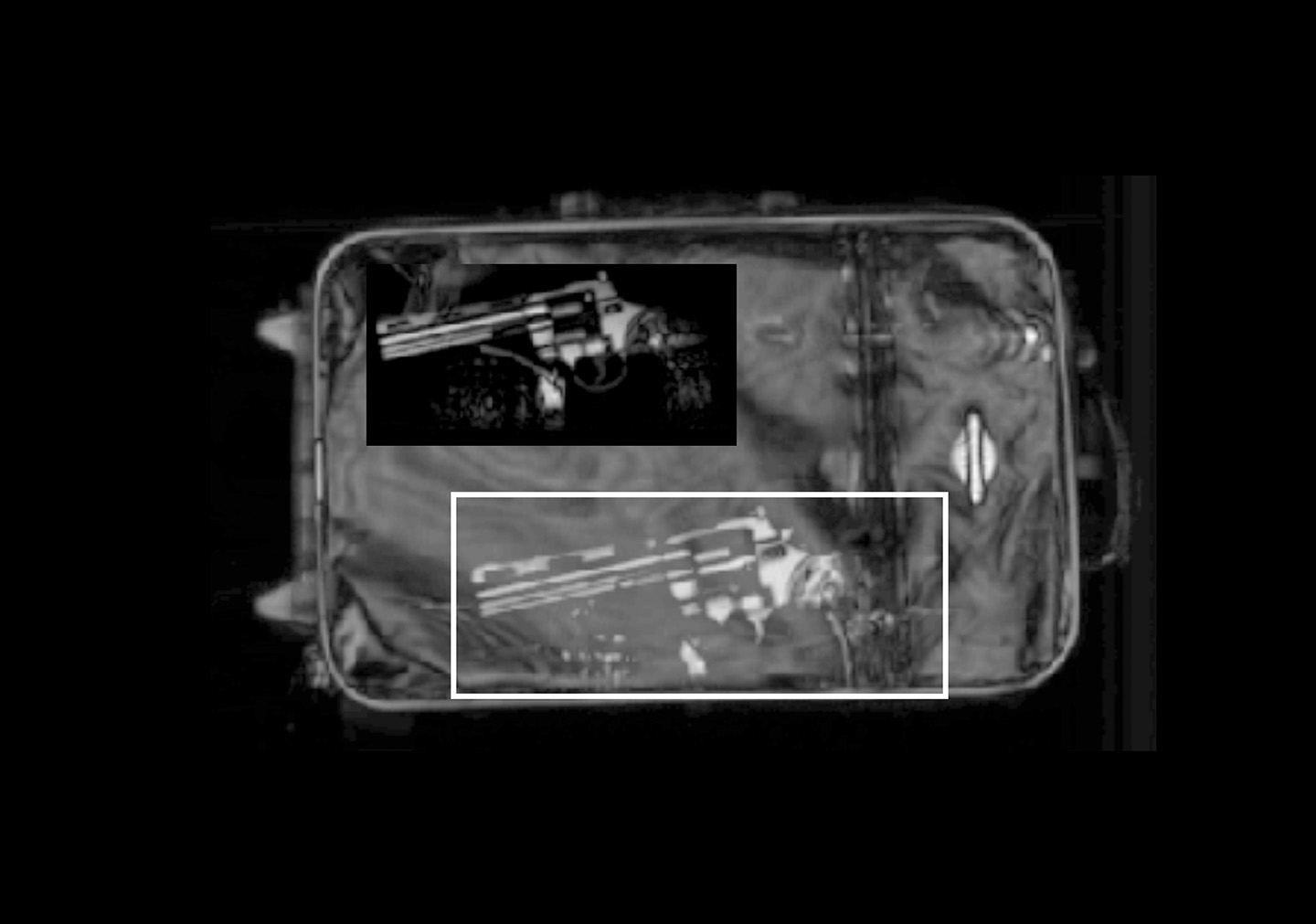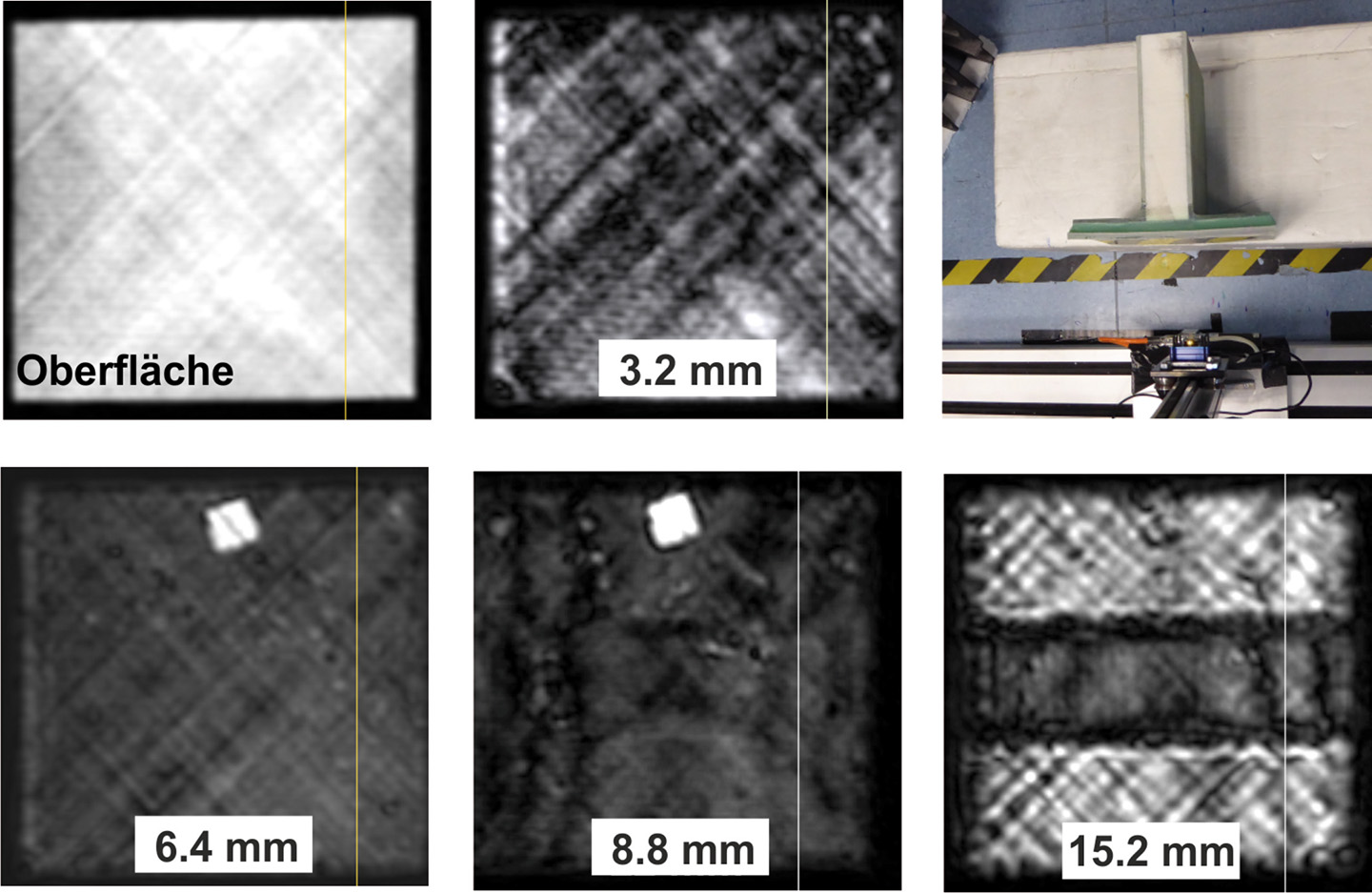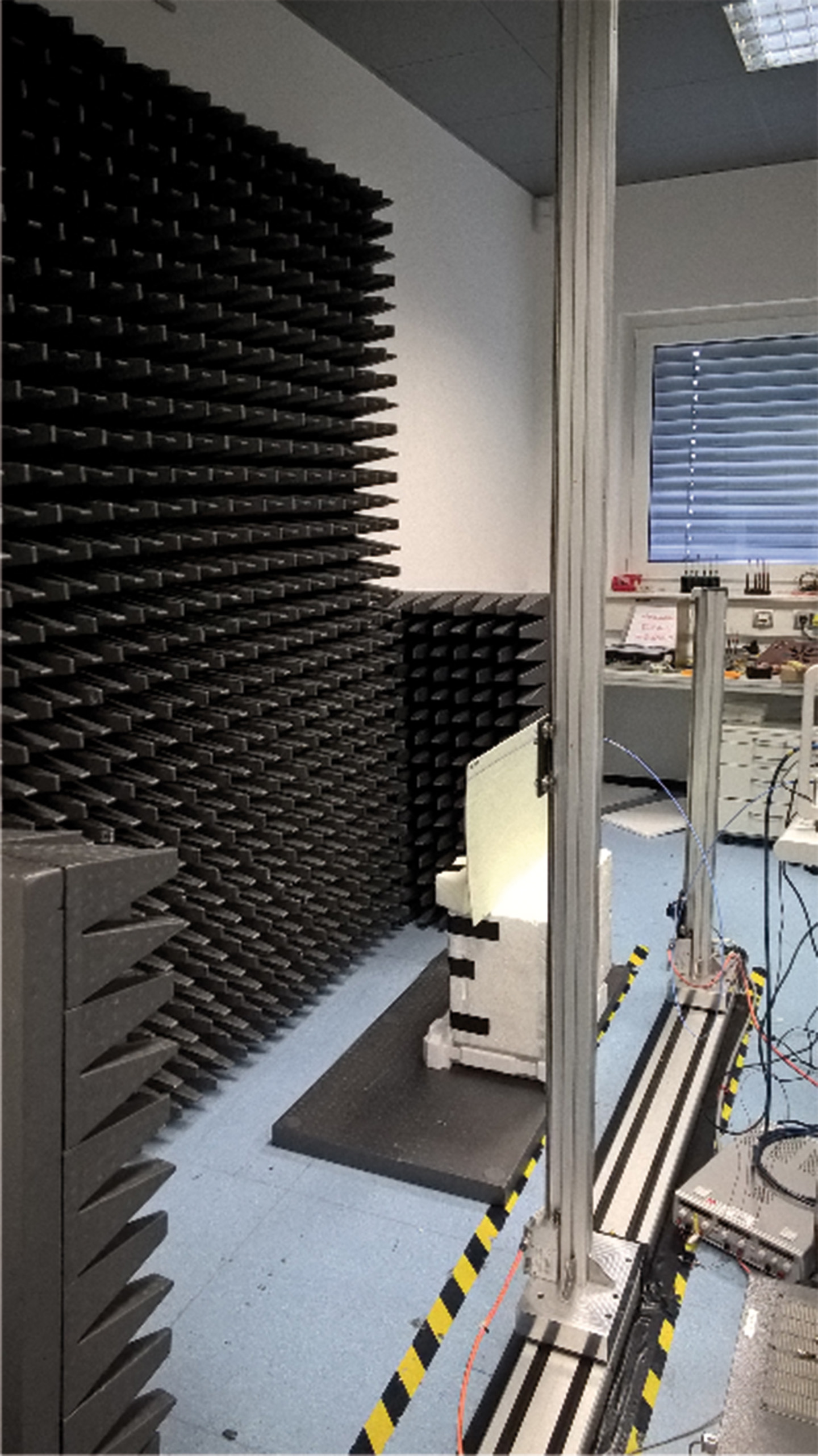3D Radar images for transmissive inpection of objects



Based on its integrated radar sensors, Fraunhofer FHR has developed techniques and algorithms for three-dimensional imaging with a millimeter wave scanner. The quality of the images created with this technology is very impressive.
Fraunhofer FHR develops highly integrated radar modules on a silicon-germanium (SiGe) basis and is therefore in a position to provide cost-effective and compact systems for numerous industrial and security applications. This, combined with the institute's effective imaging algorithms, paves the way for the creation of high-performance imaging systems. Parallel to the development of a flexible robotics module, Fraunhofer FHR also created a complete laboratory measuring system. In addition to checking luggage for illegal contents, the system is capable of carrying out material and fault analyses for scientific and industrial applications.
High resolution due to high frequency and large scanning area
Similar to camera systems, the resolution of radar images greatly depends on the size of the lens. In the case of radar images, this is achieved through the interconnection of numerous antenna elements over a surface. The millimeter wave technology of Fraunhofer FHR now allows images of up to 300 GHz, with the result that image resolutions below one millimeter are possible. This value can also be considerably surpassed when using thicker materials. An extremely high number of measurements is, however, required and this proves to be a challenge in the presence of large surfaces: scanning a surface measuring one square meter with a distance of one millimeter would require one million antenna positions. This is next to impossible when using conventional panels. The serial measurement of the individual positions is a feasible alternative in cases where the measurement object can be scanned for a number of minutes.
Scan produces images with little technological effort
The researchers at Fraunhofer FHR use a synthetic aperture radar (SAR). Instead of using multiple antennas at the same time, the antennas move over the aperture. All of the individual measurements are subsequently grouped to obtain a complete picture.
The highly integrated radar modules at 80 GHz developed in cooperation with the Ruhr University Bochum are sensors that offer a high level of performance. The installed scanning system can contend with any required scanning area with an edge of up to one meter in length. Moreover, the utilization of network analyzers or integrated sensors also allows the creation of images at 30, 60, 120 or 240 GHz.
Luggage scan for detection of hidden objects
Tests in which the 80 GHz scanning technology was used to screen luggage proved to be successful. The complete 3D reconstruction of the interior provides information relating not only to the shape of the contents but also to their position in space. This is not always possible when using conventional X-ray scanners. Furthermore, the contents can be screened layer by layer or visualized in 3D.
Figure 1 shows the result for a suitcase that measures 70 cm in width. In the summation, the suitcase is clearly visible across all layers. In particular, the strong reflection of the outer shell is easily discernable. Decisive Of major interest is, however, the handgun inside the suitcase which can be seen with a high level of detail. This becomes even more clear when an isolated layer inside the case is viewed. The radar's depth resolution of up to 5 mm hides the reflections of the outer shell.
Material scan and fault detection in fibrous composite materials
Transmitted light imaging also plays an important role in the detection of production faults and signs of fatigue in industrial quality assurance. Within the framework of the DIARO project, which wasis funded by the state of Bremen, the researchers at Fraunhofer FHR used this scanning technology to detect faults and imperfections in wind turbine blades. The primary aim was to detect inclusions, undulations or cracks in the material in a non-destructive manner. Figure 2 illustrates the possibility of layer by layer inspection. At first, the image is dominated by the strong reflections of the surface. The fibrous structure of the fiberglass composites are well visible 3 mm inside the sample. A foreign object which was inserted for test purposes can be seen at a depth of 6 mm. The bonding material between two of the composite panels is visible further inside. This allows the contact-free measurement of the bonding material. The rear side of the two bonded panels can be seen at a depth of 15 mm in the form of strong reflections. A depth resolution of 2 mm is possible in the thick material thus paving the way for high-precision tests.
Expansion potential to cost-effective multi-channel systems
The main disadvantage of the scanning method is the comparatively long measurement time. The scanning procedure for measurement ranges with less than 25 cm expansion currently takes less than 7 minutes. The integration of several measurement channels in a module should significantly accelerate the measurement time. The newly developed system should also be capable of measuring larger surfaces in just a few minutes. Fraunhofer FHR and its cooperation partner aim to integrate this technology in production lines. This will pave the way for the utilization of this very effective imaging technique in numerous applications.